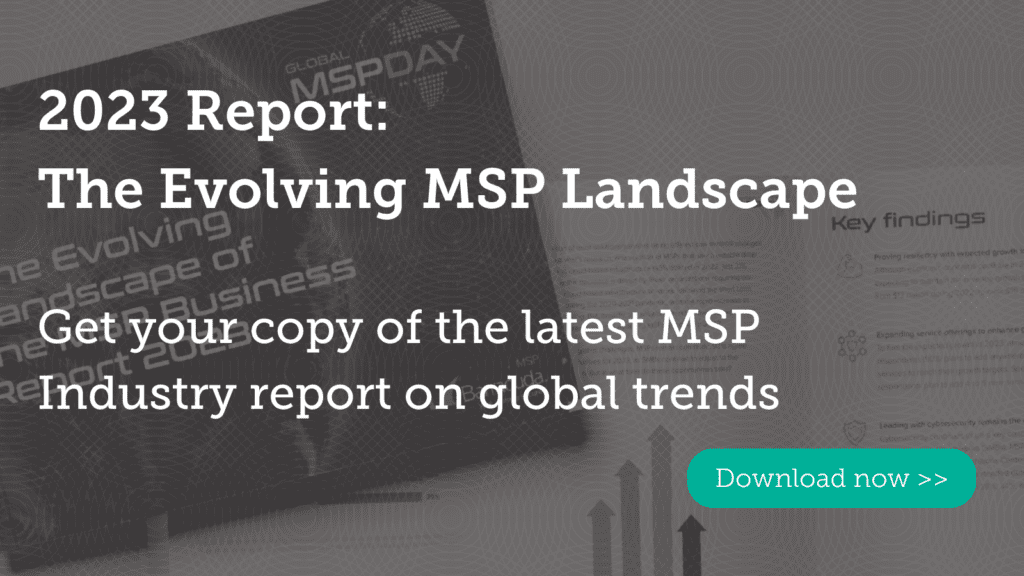 Nothing hinders growth of a managed services business more than a lack of cash flow. When you operate any type of business-to-business company, it is difficult to keep your customers consistently paying on-time.
Nothing hinders growth of a managed services business more than a lack of cash flow. When you operate any type of business-to-business company, it is difficult to keep your customers consistently paying on-time.
You might be inclined to think that tightening up your payment terms will make a significant difference, but businesses typically wait to pay vendors when they have enough cash to do so. This means that if your due date falls the day before your customer’s payroll is due, you are probably going to get your payment a few days late.
Integrating a payment portal
One key moment in our MSP business’s growth, was when we focused on automating the collections process. Giving our customers access to a payment portal and then driving consistent awareness to it had an incredible effect on incoming cash.
If you are looking to automate and optimize your account receivable process like we did, you don’t necessarily have to develop your own software. There are a few white-labeled solutions available that are built specifically for MSPs and allow you to sync data directly from your Professional Service Automation platform and accounting software.
The goal is to offer your customers a simple way to view and pay invoices, at their convenience. Offering a wide variety of payment options (such as ACH & Credit Cards) also ensures that you can accept payments however they prefer to make them. This puts the responsibility on the customer when invoices “go missing” or emails “aren’t received,” since they can access everything 24/7.
Converting customers to autopay
When our company made a hard push to get customers using a payment portal, our ultimate hope was for them to enroll in autopay. This meant that we could guarantee the receipt of their payment as soon as their invoice was dispatched. As more customers adopted autopay, we were able to develop a “cash-flow calendar,” depicting how much we expect to receive on any given business day based on scheduled portal payments and an aggregate of customer’s average time-to-pay.
As convenient as it might seem, getting customers to embrace the autopay feature is no easy feat. Using email automation and offering small discounts, we were able to get our first early adopters fairly quickly. The remaining roughly 80 percent of customers adopted the service at a much slower pace. In fact, most of the autopay conversions actually occurred on collection attempts for past due invoices.
Automating collection attempts
One of the most valuable features of this software is the ability to schedule automated collection attempts on invoices when they become past due by a specific amount of days. We chose to send alerts every 5 business days until an invoice was paid. I believe that this feature had the most positive impact to our cash flow.
Insights into these email notifications allowed us to find out who the most responsive contacts were to get our bills paid. This constant optimization gradually reduced the time in between payments for each customer not on autopay and decreased our time spent following up. It also removed any excuse for a customer “not knowing” that an overdue invoice existed, since we had proof of receipt of all our notices.
Auto-generating late fee invoices
If you have a large percentage of customers that still won’t comply with your payment terms, it is best to enforce it through late fees. It is recommended that you charge late fees on a separate invoice instead of adding it as a line item on an existing one. This ensures that customers do not hold payments on the original invoice to dispute the fee or pay the wrong amount.
Calculating the fee percentage and creating these invoices in your accounting software can be a tedious task. Instead of doing this manually, look to automate the process using a third-party integration or native feature within your account software if it is available. QuickBooks released this feature last year, but it is not available for every customer.
Using all these inexpensive, easy-to-deploy integrations can have a significant impact on cash flow for any size MSP. Once your systems are operational and your customers have adapted to the processes, the benefits can be long-lasting. It also establishes clear expectations for new customers as you bring them on, making them more likely to comply in the long term.
For more ways to grow your Managed IT Business through integration and analytics, follow the Growth Hacking for MSPs series right here on Smarter MSP. More in-depth coverage and actionable tutorials on the subject can also be found on MSP Growth Hacks.
Photo: VIKTORIUS-73 / Shutterstock
